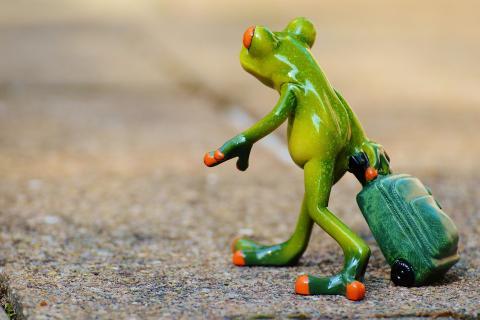ผมก็ยังมุ่งหน้าเดินต่อไปเรื่อย ๆ ผมเดินไปจน..จนน้ำทะเลมันท่วมอก แล้วผมก็เริ่มรู้สึกเจ็บที่เท้า คือเราไม่ได้สังเกตว่าไอ้ที่เราเดินอยู่เนี่ย มันเป็นทรายมันเป็นกรวดหรือว่ามันเป็นเปลือกหอย
Literal Breakdown
Summary
The Thai translation for “I continued to walk. Until the sea flooded my chest and then I felt pain in my feet which we hadn’t noticed that we were walking on sand or gravels or shells.” is ผมก็ยังมุ่งหน้าเดินต่อไปเรื่อย ๆ ผมเดินไปจน..จนน้ำทะเลมันท่วมอก แล้วผมก็เริ่มรู้สึกเจ็บที่เท้า คือเราไม่ได้สังเกตว่าไอ้ที่เราเดินอยู่เนี่ย มันเป็นทรายมันเป็นกรวดหรือว่ามันเป็นเปลือกหอย. The Thai, ผมก็ยังมุ่งหน้าเดินต่อไปเรื่อย ๆ ผมเดินไปจน..จนน้ำทะเลมันท่วมอก แล้วผมก็เริ่มรู้สึกเจ็บที่เท้า คือเราไม่ได้สังเกตว่าไอ้ที่เราเดินอยู่เนี่ย มันเป็นทรายมันเป็นกรวดหรือว่ามันเป็นเปลือกหอย, can be broken down into 47 parts:"I (male speaker)" (ผม), "also; well..." (ก็), "still" (ยัง), "to head for; move in the direction of" (มุ่ง), "front" (หน้า), "to walk" (เดิน), "to continue; go on" (ต่อไป), "so so; continuously" (เรื่อยๆ), "I (male speaker)" (ผม), "to walk" (เดิน), "to go" (ไป), "up until" (จน), "up until" (จน), "seawater" (น้ำทะเล), "it" (มัน), "to flood; to inundate" (ท่วม), "chest" (อก), "so; and" (แล้ว), "I (male speaker)" (ผม), "also; well..." (ก็), "to begin; to start (short form)" (เริ่ม), "to feel" (รู้สึก), "pain; hurt" (เจ็บ), "at; in the location of" (ที่), "foot" (เท้า), "to be equal to" (คือ), "we" (เรา), "no" (ไม่), "can; to be able to" (ได้), "to notice; to observe" (สังเกต), "as; that" (ว่า), "a particle placed before word to emphasize it" (ไอ้), "place; area" (ที่), "we" (เรา), "to walk" (เดิน), "to live at" (อยู่), "a particle placed after word to emphasize it" (เนี่ย), "it" (มัน), "to be" (เป็น), "sand" (ทราย), "it" (มัน), "to be" (เป็น), "pebble; gravel" (กรวด), "or that" (หรือว่า), "it" (มัน), "to be" (เป็น) and "seashell" (เปลือกหอย).Examples of "I continued to walk. Until the sea flooded my chest and then I felt pain in my feet which we hadn’t noticed that we were walking on sand or gravels or shells." in use
There is 1 example of the Thai word for "I continued to walk. Until the sea flooded my chest and then I felt pain in my feet which we hadn’t noticed that we were walking on sand or gravels or shells." being used:| Recording | English | Thai | Learn |
|---|---|---|---|
| Beach 1 (Dialogue) | ชายหาดหนึ่ง (บทสนทนา) |
Practice Lesson

Lesson words
Acknowledgements
Audio source
aakanee.com
Audio licence
https://creativecommons.org/licenses/by-nc-sa/4.0/


